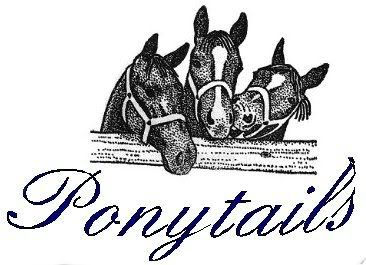I originally wrote this post for Revolution Publishing and decided to cross-post it here.
 National Novel Writing Month (aka NaNoWriMo or NaNo) will be upon us in just 4 short days. For those who don’t know what NaNo is, it is a 30 day challenge to write a 50,000 word (approximately 170 page) novel. Thousands of people worldwide take part with varying degrees of success. Some just get the satisfaction of having written their “great novel” and others actually get published (i.e. Water For Elephants was a NaNo novel).
National Novel Writing Month (aka NaNoWriMo or NaNo) will be upon us in just 4 short days. For those who don’t know what NaNo is, it is a 30 day challenge to write a 50,000 word (approximately 170 page) novel. Thousands of people worldwide take part with varying degrees of success. Some just get the satisfaction of having written their “great novel” and others actually get published (i.e. Water For Elephants was a NaNo novel).
I personally have not “won” NaNo the two years I have participated. My first year, I did no planning and jumped right in. It was my first attempt to even write a novel and I managed about 5,000 the entire month. Last year was my second year. I did a little more planning (still not enough to help through NaNO), told my husband I wanted to do it, posted about it on my personal blog and twitter accounts, kept a white board with my total word count on it, and ended the month with just over 30,000 words.
One would think that writing a minimum of 1,666 words a day for 30 days wouldn’t be a big deal, however it’s just like exercising. Some days, you don’t want to even look at your writing and other days, you can’t stop writing. Due to other commitments this year, I’m not going to participate in NaNo but here are some links to pages (and some of my personal writing tips) that you will find useful in your quest to write the next great novel.
First off, you need to go to the National Novel Writing Month homepage and sign up. They have great resources there and you will find the forums with people at all stages of writing. Don’t be afraid to ask questions on the forums. Those lovely people don’t bite (unless you ask them too).
Planning Tips:
StoryFix.com has a wonderful series on planning your NaNo book. They have been posting a tip a day the entire month of October.
Nathan Bransford (former Literary Agent, now Author) has a wonderful blog on writing. I went to his blog last year for how to tips and they have really being helpful! Bookmark his series on How To Write A Novel, because you will be referring back to it.
The Writer’s Knowledge Base is a wonderful site that is a search engine on everything to do with writing.
The Snowflake Method presented by Bubble Cow. I have not used the Snowflake method for planning but many people swear by it.
Just Keep Writing:
Sign up for Fictionista Workshops’s WitFit Prompts. Every day, Fictionista will email you a prompt. Use it to get your creative juices flowing. You never know, you might end up using the section in your story.
Every Tuesday at 12:30pm ET, Leah Petersen hosts 5 Minute Fiction. Right at 12:30pm, she posts a prompt (along with a pretty picture to help inspire you). You have 5 minutes to write. It is a fun fast paced writing challenge. I’ve used a few ideas from 5 Minute Fiction in my current WIPs (works in progress).
 The one tool that I use all the time (which was introduced to me by the wonderful Shiloh Walker) is Dr Wicked’s Write or Die. This wonderful free web-based application (or you can download the desktop version for $10) allows you to choose your word count goal, the time in which you want to have it written in, and how strict you want the program to enforce your writing (ie you stop writing for a certain amount of time and the program changes color and starts playing ANNOYING sounds). After you set your goal, you are taken to a blank distraction free page with a word count counter and a countdown clock. Keep typing! If you stop for a long amount of time, you will be heralded with a badly played violin, honking cars, and other sounds. Even though I could easily write 800-900 words in 20 minutes, I set my goal at 600 words for 20 minutes. Most people tend to type a little slower when they have to actually think about what they are writing. If after I do a Write or Die session, I get up from my chair and go do something, come back about 10 minutes later and start again. However, there are times that I just keep writing after the clock has ended. The program will keep timing you even if the clock has expired. Then post your word count and time on Facebook and Twitter. You will be amazed at the number of people cheering for you.
The one tool that I use all the time (which was introduced to me by the wonderful Shiloh Walker) is Dr Wicked’s Write or Die. This wonderful free web-based application (or you can download the desktop version for $10) allows you to choose your word count goal, the time in which you want to have it written in, and how strict you want the program to enforce your writing (ie you stop writing for a certain amount of time and the program changes color and starts playing ANNOYING sounds). After you set your goal, you are taken to a blank distraction free page with a word count counter and a countdown clock. Keep typing! If you stop for a long amount of time, you will be heralded with a badly played violin, honking cars, and other sounds. Even though I could easily write 800-900 words in 20 minutes, I set my goal at 600 words for 20 minutes. Most people tend to type a little slower when they have to actually think about what they are writing. If after I do a Write or Die session, I get up from my chair and go do something, come back about 10 minutes later and start again. However, there are times that I just keep writing after the clock has ended. The program will keep timing you even if the clock has expired. Then post your word count and time on Facebook and Twitter. You will be amazed at the number of people cheering for you.
Writing Platforms:
I use a white board to jot down my ideas, but do all of my writing in Open Office or MS Word. I have my entire WIP in one file. Some authors do a different file for each chapter or scene. Many others use programs like Scrivener ( Mac or Windows) and PageFour to do their writing. I have played a little with PageFour but not enough to know if I like it.
Literature and Latte has a great links page with writing software for both Mac and Windows computers.
I hope all that information helps. Just remember that it is okay for your first draft to suck. What you are writing for NaNo does not have to be perfect. Just turn off that inner editor. You can fix things (and do your serious research) in December.
Most importantly, write the book you want to write. Don’t try to write what you think might sell. Just write for the fun of writing, even if it is Fan Fiction. Have fun and let your imagination soar.
If you have any suggestions for your fellow authors, please share them in the comments!
















Great tips! I think for 5MinuteFiction this year I’ll do the same as last year and post prompts for the participants to use within the setting of their NaNoWriMo WIP. That was lots of fun last year and gave me some great ideas to work into my own NaNovel.
Leah
Great tips 🙂 I’ve never used Write or Die but I might give it a go this year!
Jessica P xo
My Latest Blog Post: The Search for a Plot (a NaNoWriMo conundrum)